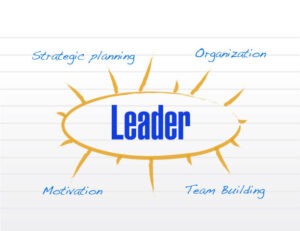Management traits vs leadership traits :Key differences explained
Introduction to Leadership and Management Traits

1.1 Understanding the Core of Human Influence
Every workplace needs direction, but that guidance can seem different when comparing MT vs LT. Some people manage by making plans, organizing tasks, and ensuring everything remains consistent—key Governance in action.
On the other hand, some people lead by motivating, persuading, and directing change, highlighting the contrast in management traits vs leadership traits. It’s not the titles that matter in these two roles; it’s the attributes that lead actions, shaped by management traits vs leadership traits.
Some people may have both, but most people naturally incline toward one side of the Operational mindset vs the Visionary mindset. It’s important to tell these attributes apart since they change not only how activities are done, but also how individuals feel about doing them, a core difference in Transformation. When people know about these disparities—rooted in understanding management traits vs leadership traits—the workplace is healthier, more productive, and more creative.
- Most of the time, managers put structure and regulations first.
- Leaders often think about people and their vision.
- Knowing people’s qualities can help you give them the correct jobs.
- Making these positions clear makes it easier for teams to work together.
- Balanced success typically results from combining both approaches.
1.2 Why Traits Are Important in the Workplace
Traits determine how people act every day, such as how they deal with stress, talk to others, deal with change, or make friends. Your qualities are the unseen forces that shape everything around you, whether you’re managing a team or leading one. A lot of the time, conflict or failure isn’t because someone doesn’t have the right abilities; it’s because their attributes don’t match the role or situation. Everyone benefits, not just the individual, when attributes align with the organization’s culture and objectives.
- You can gain authority and trust by having strong qualities.
- With awareness, traits can grow over time.
- Similar to how leaders and managers behave, teams act.
- Employees are happier when they have good attributes.
- Consistent characteristic alignment is frequently what makes an organization successful.
1.3 Connecting Ideas
A lot of people think that management and leadership are two different things, but they are part of the same thing. The finest experts know when to employ each combination of attributes. A leader might have to take care of resources. A manager might need to motivate a group. When both sets are recognized and used on purpose, workplaces become more flexible and productive. This understanding makes it possible for leaders to be clear and managers to be empathetic.
- One person can exhibit both leadership and management characteristics.
- It depends on the situation which trait to rely on.
- Adaptive professionals change based on what is needed, not what they want.
- Cross-training in both skill areas can help future executives get ready.
- Finding a balance is essential to a company’s long-term success.
1.4 Common Misconceptions
It is a common misconception that people are taught to be managers and not born leaders. You can learn and develop all of these attributes. Another widespread assumption is that leaders don’t handle logistics or that managers can’t motivate people. These preconceptions often hinder people from extending their potential or recognizing value in others. People can become better professionals by getting rid of these false ideas.
- It’s not enough to have charisma as a leader; you have to do something.
- It’s not just about regulations when it comes to management; it’s also about being responsible.
- With time, traits can change and grow.
- Without structure, leadership turns into anarchy.
- Being a manager without empathy leads to burnout.
1.5 Traits as Tools, Not Names
Being a “manager” or “team leader” doesn’t mean you have skills. What matters are traits. A person with a “junior” title might be a great leader, yet a person with a “senior” position might have trouble with simple managerial tasks. Traits are not based on status; they are ways of acting and thinking. Knowing this opens up the potential for growth in every employee, no matter what level they are at.
- Having a title does not mean you are a good leader or manager.
- Everyone has certain traits from both groups.
- Encouraging growth in both areas strengthens internal leadership pipelines.
- Mentorship can help these features grow faster.
- There are leaders and managers at every level of a company.
2. What is a trait of a leader?

2.1 Power to Change Without Authority
Influence, not rank, is what makes someone a true leader. A leadership quality is a way of acting that naturally attracts and inspires people and brings out the best in them. These people don’t constantly yell or act like they’re in charge. Instead, they are purposeful, intentional, and emotionally smart. Their actions never change, and their vision spreads. These kinds of attributes help teams do well, even when things are up in the air.
- People are more likely to do what leaders say when they have certain features.
- These attributes come from having an emotional connection.
- Trust and clarity are frequently the first steps to influence.
- People who are strong leaders build up people around them.
- They help individuals see possibilities, not just chores.
2.2 Emotional Intelligence as the Base
Emotional intelligence, or the capacity to recognize and control one’s own emotions in addition to those of others, is one of the most essential qualities for leaders. Emotionally intelligent leaders know themselves, can relate to others, and are good at talking to people. They can read the crowd, change their tone, and settle disagreements without being in charge. This emotional agility helps them remain cool under pressure and lead with compassion.
- Self-aware leaders can see their strengths and weaknesses.
- Regulation stops feelings from hurting relationships.
- Leaders with high EQ make others feel protected mentally.
- Trust builds faster when emotions are well-managed.
2.3 Thinking with a Vision
A strong sense of purpose is frequently what makes someone a good leader. These people think about the future, including how their actions will affect others, what their legacy will be, and how they can change things for the better. They are driven not by short-term gains but by sustainable success. This quality helps teams strive toward important goals, which makes people care about their work.
- Leaders set goals that have meaning.
- Vision drives people to commit instead of just follow.
- Teams need more than just quarterly data to guide them.
- True leaders talk about “why” more than “how.”
- A clear vision promotes morale and energy.
2.4 Communication as a Trait
Not only are great leaders good speakers, but they are also great communicators. This involves paying attention when you listen, being clear when you talk, and making sure everyone understands. They change the way they talk depending on who is listening and leave room for honest critique. Their calmness and clarity give steadiness when things are tough.
- Speaking and listening are both parts of leadership communication.
- Great leaders want people to talk to one another.
- Messages are easy to understand, straightforward, and in line with the goal.
- People are not afraid of feedback.
- Culture is shaped by how people talk to each other.
2.5 Bravery and Duty
Bravery is one of the attributes of a good leader. This doesn’t mean being brave in a physical way, but in taking responsibility, telling the truth, and making painful choices. When others are quiet, leaders speak up. They lead through tough times, take responsibility when things go wrong, and fight for what counts. Courage is what keeps leaders grounded and respected, especially when the outcome is unclear.
- Leaders take responsibility for their mistakes and provide credit to the team for their successes.
- They make choices without being afraid of risk.
- Integrity is a trait that can’t be changed.
- When necessary, they question the way things are.
- Real leaders do things even when they don’t want to.
3. What does it mean to have a management trait?

3.1 Clear organization and process
Management emphasizes systems, processes, and clear direction. People who are good at managing generally do a great job of translating vague goals into specific actions. They’re competent at planning, assigning, and monitoring work to guarantee consistency. Management attributes keep teams grounded in realities, timelines, and expected outputs, whereas leadership traits tilt toward inspiration and vision.
- Managers split goals into small portions.
- They make plans and establish due dates.
- They keep an eye on progress using defined standards.
- Managers hold all teams accountable.
- They provide order to chaos by making people think in an organized way.
3.2 Risk Management and Predictability
Managers are usually less willing to take risks than leaders since their attributes are more focused on keeping things in order and reducing uncertainty. They are in charge of keeping systems stable, controlling costs, and avoiding problems. A well-managed team doesn’t just get the task done; it accomplishes it without any surprises and with clear expectations from the start.
- Managers think ahead about problems that might come up.
- They make backup plans to keep on schedule.
- Controlling costs and allocating resources are top considerations.
- Teams feel less anxious when they have predictable routines.
- They make choices based on data and patterns from the past.
3.3 Delegation and Role Clarity
One of the most important things that good managers do is give the right people the proper duties. They know what each person is good at and how to put teams together to get the most work done. Managers are the ones who know who is doing what, when, and with what tools. They know how to delegate tasks so that individuals don’t feel overwhelmed or that they aren’t doing enough.
- Managers set expectations and establish job duties.
- They give people jobs based on their skills and how much time they have.
- By making roles clear, they cut down on duplication.
- It is clear who is in charge of what.
- They make sure that workloads are even between departments.
3.4 Discipline and Consistency
Managers do well with rules, discipline, and processes that can be used over and over again. This regularity keeps initiatives, departments, or organizations moving forward without getting off track. Their strength lies in keeping things in order, following rules, and making sure that results meet pre-set criteria.
- Managers make sure that processes are the same for everyone to save time.
- They make sure that rules are followed to cut down on mistakes.
- Discipline makes performance more consistent.
- They are based on SOPs (Standard Operating Procedures).
- Teams become consistent and dependable under great management.
3.5 Keeping an eye on things, judging them, and reporting them
A manager’s capacity to keep track of results and judge performance over time is one of the most important things about them. Managers don’t only supervise work; they monitor it, analyze it, and report outcomes to stakeholders. This feedback loop makes sure that things keep getting better, that operations are always great, and that everything is clear.
- KPIs, or Key Performance Indicators, are used by managers.
- They do performance reviews regularly.
- Progress is written down and sent in.
- They find places that need to be fixed and improved.
- Monitoring ensures that everyone is working toward the same goals.
4 Ways Leadership and Management Traits Are Different

4.1 Focus on goals vs. focus on vision
The way goals are tackled is a big difference. Managers are goal-focused: they take defined objectives and design procedures to attain them. Both are needed, yet they work at separate levels of the same task.
- Managers carry out their aims one step at a time.
- Leaders get others to work together for a broader goal.
- Managers are interested in “how”—the tools and processes.
- Leaders think on “why”—the meaning and purpose.
- When these two approaches are in sync, they work well together.
4.2 Control and Influence
Managers typically utilize rules and power to tell others what to do. They employ rewards, punishments, and mechanisms to keep individuals on track. Leaders, on the other hand, use influence to steer behavior by changing how people feel and think, so they want to follow instead of feeling compelled to.
- Managers make sure that rules are followed and check on compliance.
- Leaders build trust and show how to act.
- Control works better in routine or high-risk contexts.
- Influence makes people want to innovate and stick with it.
- Both of these things are necessary for businesses to succeed in the short and long term.
4.3 People vs. Process
Managers mostly think about systems, checklists, and what needs to be done. They are focused on what needs to be done and when it needs to be done. Leaders value people – their development, vitality, and connection to purpose. Leaders develop culture while managers improve operations.
- Managers say, “What’s the plan?”
- Leaders want to know, “How are the people doing?“
- Managers care more about operational health.
- Leaders care more about cultural health.
- For an organization to last, it needs both.
4.4 Now vs. Later
A lot of the time, management skills come from how well you do your job now. Decisions are based on metrics, timetables, and how resources are currently being used. Leadership attributes, on the other hand, are more about the future than the present. They are less about what is and more about what could be. This means that leaders have to deal with more uncertainty, while managers have to deal with less.
- Managers focus on short-term goals.
- Leaders look ahead to long-term impact.
- Leaders look for opportunities, while managers lower risk.
- There is a natural conflict between forecasting and reporting.
- Both time frames are part of a balanced strategy.
4.5 Maintenance vs. Growth
Managers are good at making sure that businesses run smoothly. They keep up standards and handle change carefully. Leaders want to change, go forward, and grow. This typically leads to different levels of risk and different ways of coming up with new ideas.
- Managers keep things safe.
- Leaders go above what is expected and do new things.
- Managers like things to stay the same; leaders like things to change.
- Each organization has its way of looking at growth.
- Together, they make sure that stability doesn’t suffer when new ideas come up.
Ten Clear Differences Between Management and Leadership

5.1 How to Talk to People
Leaders use stories, feelings, and vision to inspire others. Managers talk to give direction, with an emphasis on clarity, instructions, and updates.
- Leaders: “This is where we are going and why.”
- “Here’s what needs to be done by Friday,” said the managers.
- Leaders are aspirational.
- Managers give instructions.
- Both are important for initiatives.
5.2 Attitude Toward Change
Leaders welcome change, while managers typically fight it. Leaders think of it as progress. Managers think it’s risky.
- Leaders start change.
- Managers’ control and tempo change.
- A lot of change without management leads to anarchy.
- Stagnation happens when there is too much stability and not enough leadership.
- Both are needed for change to work.
5.3 Finding Solutions Approach
Managers deal with challenges within the limits of what is already in place. Leaders question the structure itself.
- Fixing things is what managers do.
- Leaders wonder if it should even be there.
- Managers use systems that have worked before.
- New systems are made by leaders.
- Each method leads to a different solution.
5.4 Strategy for Motivation
Leaders inspire others by giving them a reason to do something. Managers use rewards, punishments, and structure to inspire people.
- Leaders use their values.
- Goals that can be measured are used by managers.
- Leaders inspire people to agree.
- Managers put a lot of emphasis on output.
- Different people in the team are motivated by different things.
5.5 Risky Behavior:
To keep systems safe, managers stay away from hazards that are unnecessary. Le hazardsaders typically take risks to reach their full potential.
- Managers ask, “Is this safe?”
- “Is this worth it?” leaders ask.
- Managers use risk analysis to make decisions.
- Leaders trust their gut more often.
- Most of the time, innovation is somewhere in the middle.
6 The Five Most Important Traits of a Good Leader

6.1 Honesty
Trust grows faster with a leader who is honest than with any other technique. People follow those whose words and actions are in line. When leaders are honest, fair, and open, they create an environment where people feel comfortable and can trust each other.
- Leaders who are honest own up to their mistakes.
- They stick to their principles even when things are tough.
- Integrity attracts devotion and commitment.
- It helps settle disagreements fairly.
- It has an effect that lasts a long time.
6.2 Understanding
Empathy helps leaders connect with others on an emotional level. This relationship makes people trust one another and work together. Empathetic leaders are better able to understand what their people need, which makes them better at dealing with change, disagreement, or disaster.
- Leaders who are honest own up to their mistakes.
- Even when things are difficult, they remain true to their beliefs.
- They lower stress by comprehending.
- Empathy is what makes people feel included.
- It makes people feel better when things are unknown.
6.3 Being able to adapt
In today’s world of leadership, it’s important to be able to change your plans and actions when you get new information. Adaptable leaders overcome turbulence without losing vision. They remain calm, nimble, and enthusiastic throughout change.
- Being able to adapt helps you make better choices.
- It helps teams be more creative.
- Leaders who are flexible bounce back from problems quickly.
- They show how to be strong.
- They change without losing speed.
6.4 Decisiveness
Even when the stakes are enormous, great leaders make clear choices. They gather input, assess danger, and then act confidently. Not being able to make a decision makes things confusing, whereas being able to make a decision gives things momentum.
- Decisive leaders are brave.
- They take accountability for outcomes.
- They make things clear when things are unclear.
- Their choices help people trust them and move forward.
- Teams need clear direction, not doubt.
6.5 Vision
Vision is the ability to perceive what could be, and it is one of the most important traits of a leader. It offers them something to work toward. Vision turns duties into meaning and jobs into missions.
- Leaders show people how to make the future better.
- They align team goals with greater influence.
- Vision gives people at work a sense of purpose.
- It helps in planning for the long term.
- It shows the way even when the way isn’t obvious.Read More About
Leadership & Influence


